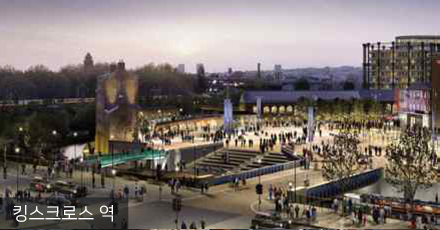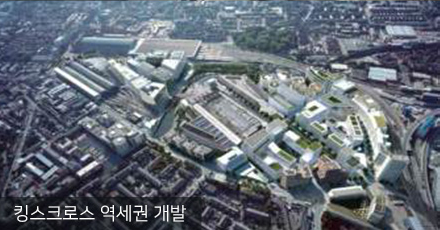King's Cross Station (London)


Basic Information
-
Once an industrial and distribution hub in the Victorian era (mid-late 1800s), but declined in the 1970s due to abandoned distribution, coal, and grain warehouses. Became London's lowest-rent area among central surrounding areas, turning into an urban development challenge
-
London terminus for Eurostar connecting Europe and central London (passenger capacity similar to Heathrow Airport at 63 million annually). King's Cross/St. Pancras stations feature access to 6 underground lines, 2 national rails, and 4 airports
※ Third busiest underground station in London by passenger flow -
Development in progress (2001-2020, site area 270,000㎡, total floor area 740,000㎡, KRW 4.3 trillion) designated as “Central Activity Zone” and “Opportunity Areas” in London Plan
※ Central Activity Zone: Promoting metropolitan-level financial, retail, and cultural industry activities
※ Opportunity Areas: Regions capable of providing jobs and housing through large-scale development

- Swift and smooth urban regeneration project implementation through stable government support
- Consistent project implementation with appropriate project scale based on market demand forecasts
- Achieving both regional revitalization and private capital attraction through university establishment
- Successful implementation of world-class public spaces
Basic Direction
-
Making an area that was once the city's boundary part of London, creating a vibrant place with constant success and amazing events (Master Developer Robert Evans)
Master Plan
-
Development plan for total floor area of 740,000㎡ including 50 new buildings with 20 historic building restorations
-
20 new roads, 10 public spaces, expected resident population 45,000명
Introduced Uses
-
Business facilities (50%), residential (approximately 2,000 units), commercial facilities, accommodation facilities, and educational facilities
-
(University of the Arts London, approximately 5,000 resident population)
